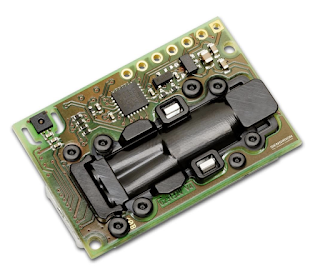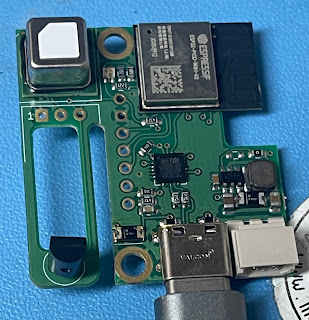We (A&A) sell gigabit services, as both Ethernet and FTTP. We see other ISPs selling 950M or 900M, why? Will I get a gigabit?
What is a gigabit anyway?
A gigabit speed means one billion bits of data per second, simples...
There are a couple of gotchas to start with - firstly a gigabit is 1,000,000,000 bits per second, it is not 230 (i.e. 1,073,741,824) bits per second. A lot of files on computers are measured in gibibytes or mebibytes, not gigabytes or megabytes. The second gotcha is this is bits, not bytes. There are 8 bits in a byte, so a gigabit is 125,000,000 bytes per second.
So where exactly are we measuring that speed?
The answer is that when packets of data are sent to you, i.e. to your equipment in your home or office, those packets of data have a sequence of bits that are coming at 1 billion bits per second for the whole of each packet.
That sounds like a cop out, what do we mean by that exactly?
Well, that is how it works, packets of data are sent. You don’t actually get a “file” in one go, it comes as packets of data, and there can be lots of other packets of data for other reasons, and even gaps between the packets.
Why gaps?
The main reason for gaps between the packets is that the Internet as a whole, and lots of the bits of infrastructure to you, are a shared service. You are sharing infrastructure with other people. How much of that is shared and where it is shared depends on the service you have and where you are transferring data from. An un-contended Ethernet service from us means we can send back to back packets at a gigabit from our data centre to you and get that true full gigabit speed with no gaps - yay! But even then, our equipment and the rest of the Internet is shared with other people. For services like FTTP, some of the infrastructure between us and you, and even between the exchange and you, is shared - indeed BT basically only guarantee about 20% of the download speed during their busiest period.
Being shared does not necessarily mean you don’t get the full gigabit though - that happens when there is contention, and lots of the Internet is built with spare capacity at all times. We aim for A&A never to be the bottleneck, for example, so yes, most of the time, if you have a gigabit service you can expect a gigabit throughput.
Other stuff in packets?
Even when there is no contention and packet are coming back to back with no gaps at that full gigabit speed, that does not mean you can transfer a file at a gigabit speed (i.e. 125MB/s). But why?
The answer is that packets don’t just contain the data in your file. Even a full sized packet carrying, say, 1440 bytes of data from your file, will have extra bits. Typically 20 bytes TCP, 40 bytes IP, 26 bytes Ethernet with VLAN tag, 8 bytes PPPoE, all of which take up space in that packet. That means over 5% is not part of a file transfer even with full sized packets. That is one reason to see services sold as 950M, not because the actual service is not gigabit, it is, but because the way you are using it (Internet access) has overheads.
What is special about gigabit?
All of what we have said is true for any speed of Internet connection, contention and overheads mean the speed of a file transfer does not look the same as the underlying speed of the bits on the wire, which is what you are buying. So what makes gigabit special?
Well, a gigabit is fast. Indeed, with even just tens of milliseconds latency, it is way faster than TCP/IP was originally designed for. But let’s look at a few of the reasons a gigabit can be a challenge.
- Your computer may only have a gigabit port, and so may your switches. That alone means you are sharing your own gigabit infrastructure with other uses on your own network. That can have some impact. Indeed, actually managing a gigabit throughput can be a challenge for many computers depending on their age. If you have a modern computer, you should be able to get pretty close though.
- Remember WiFi is rarely sensible at these speeds. Some specifications of modern WiFi over short distances do claim to handle a gigabit, but it is rare. If you want to get close you need Ethernet wired in.
- Your router / firewall may not be up to it. Even the firewalls we make, such as the FireBrick FB2900 cannot quite do a gigabit, sorry. We have new designs planned which can, but component shortages mean they are a year or two off. Just because a router or firewall has gigabit ports does not mean it can handle a gigabit throughput - so check the specification.
- Whilst much of the Internet backbone is very fast fibres, some even terabits in speed, lots of bits at the edges are slower. Gigabit end user connections are relatively new, and so some companies serving files to you may have lots of servers, and ports, but those ports could be only gigabit themselves. So even though they may have capacity for thousands of customers downloading at once, if you are one of 2 people on a server port that is only a gigabit, you may only get half that speed. The good news is this is changing, and lots of kit is faster - notably the big content delivery networks which are used for a lot of downloads (like software updates and so on) are a lot faster.
- Even where there are big servers with very fast ports, gigabit speed end users can hog all of the download capacity, and so servers may well limit individual transfer rates to make it fare. Having a gigabit means you can easily “suck” 10 times as much as most other people.
- A lot of speed checkers were designed for ADSL and VDSL and simply don’t have the capacity to be able to measure gigabit speeds. So check if they claim to be able to do that. Some do now, because there are gigabit users, so some can cope.
What can I actually expect?
YMMV, as they say (Your mileage may vary). I personally have a gigabit fibre but using a FireBrick FB2900, and in my case, most of the time, the FB2900 is the bottleneck. Even so I have seen sustained downloads of a game s/w update at 850Mb/s. Some people with faster equipment than I have do get much higher speeds. A gigabit (allowing for those packet overheads) is possible, but it will depend on a lot of factors, as you can see.







